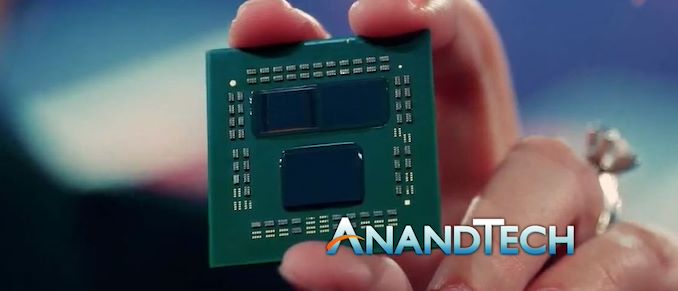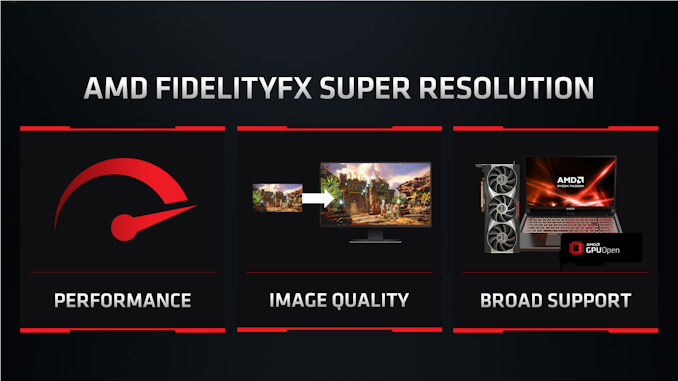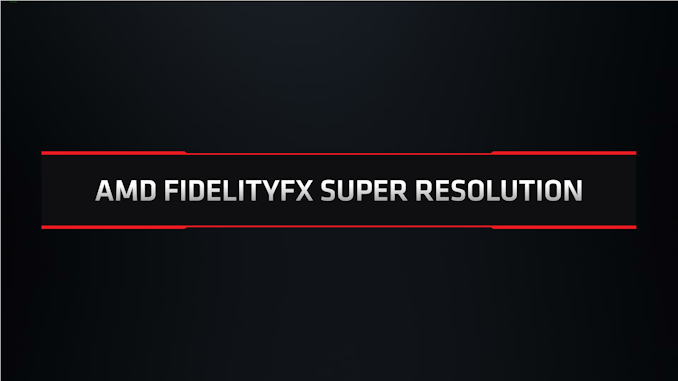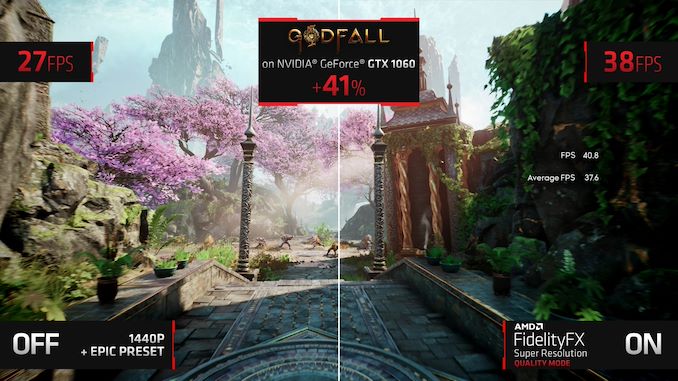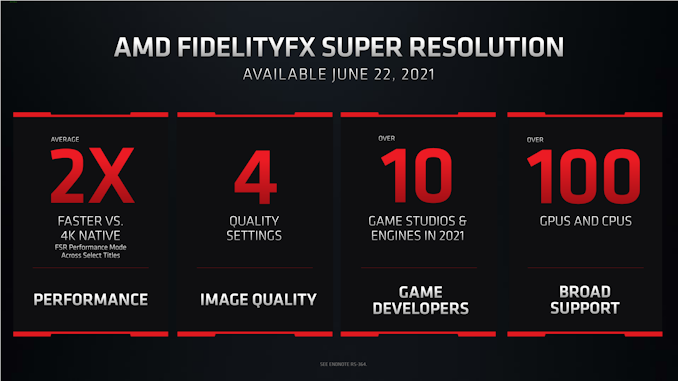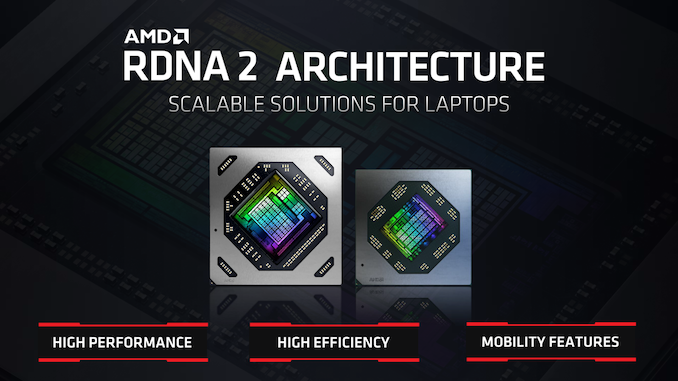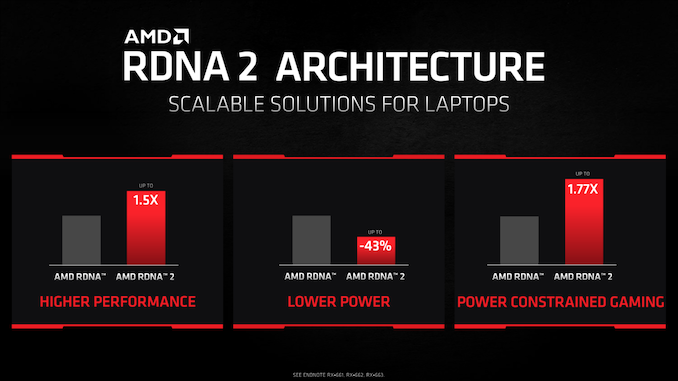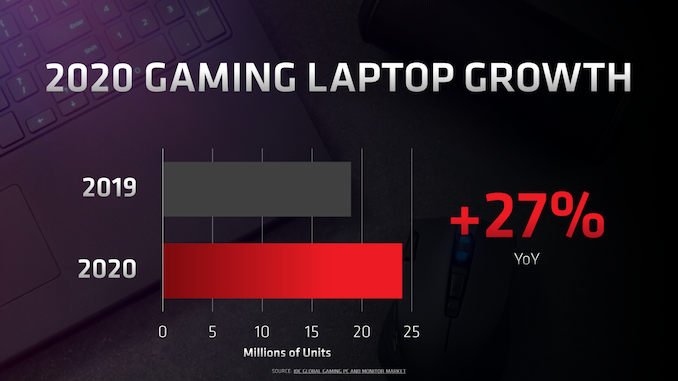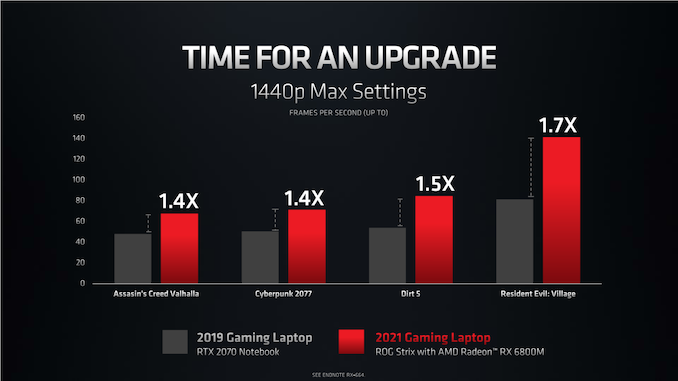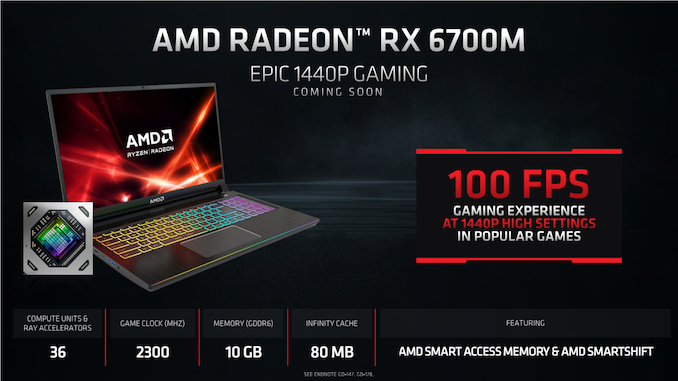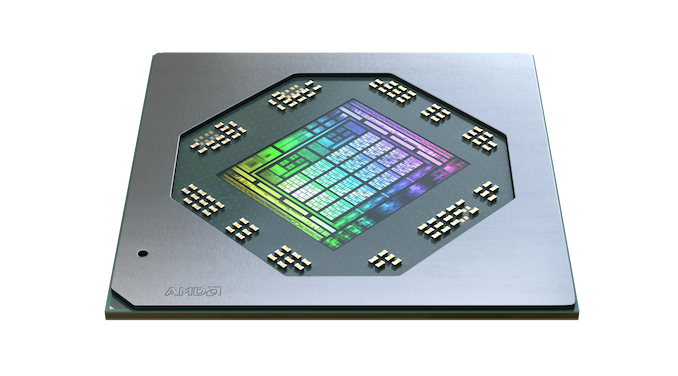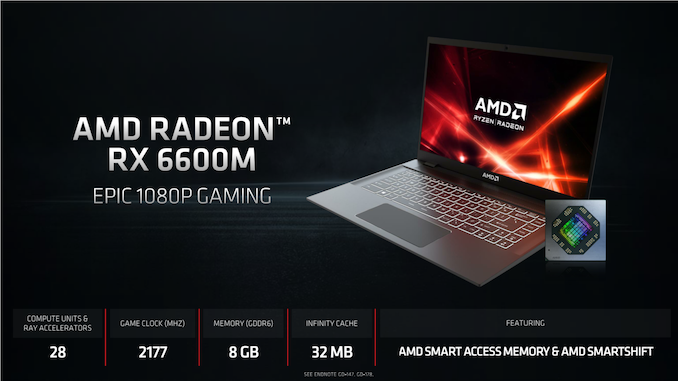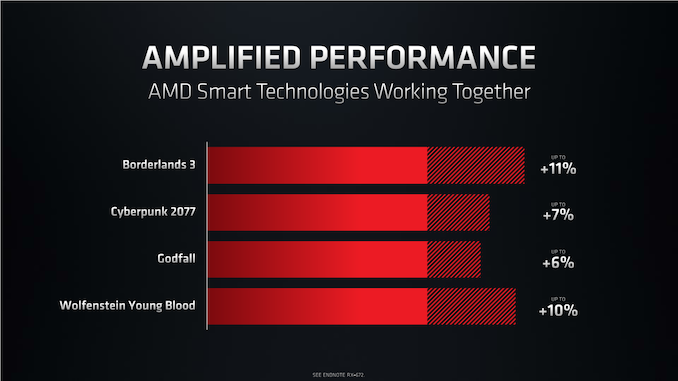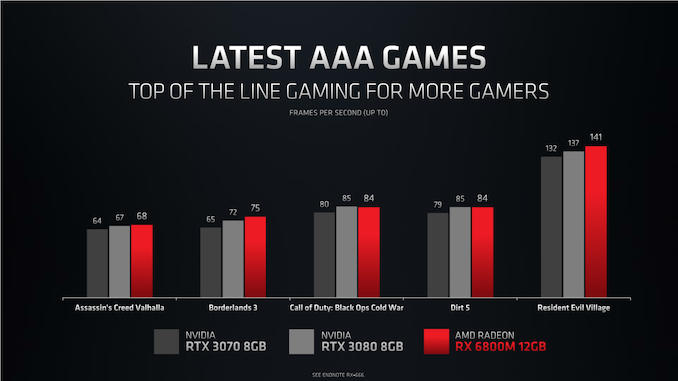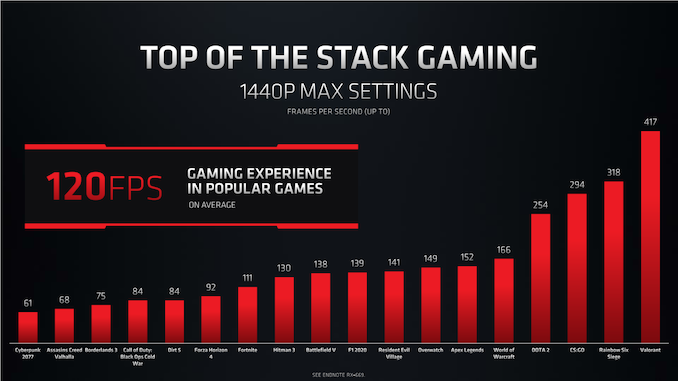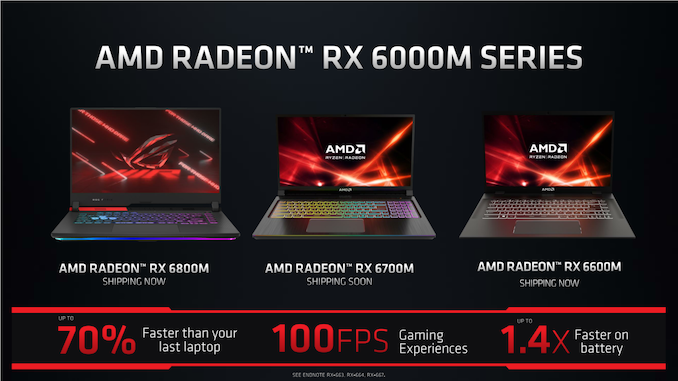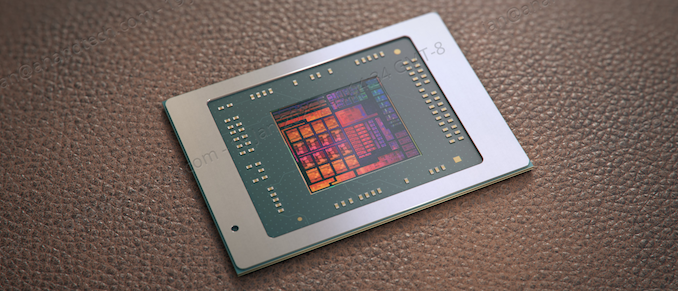Uber and Lyft rides have been almost twice as expensive, because the ride-hailing companies have been having difficulties meeting demand.
Source: Engadget – Uber and Lyft rides are pricier due to a lack of drivers (and the waits are longer, too)
Monthly Archives: May 2021
AMD Demonstrates Stacked 3D V-Cache Technology: 192 MB at 2 TB/sec
The AMD team surprised us here. What seemed like a very par-for-the-course Computex keynote turned into an incredible demonstration of what AMD is testing in the lab with TSMC’s new 3D Fabric technologies. We’ve covered 3D Fabric before, but AMD is putting it to good use by stacking up its processors with additional cache, enabling super-fast bandwidth, and better gaming performance. That’s the claim at any rate, and AMD showcased its new demo processor on stage at Computex. Here’s a deeper run-down into what it actually is.
Source: AnandTech – AMD Demonstrates Stacked 3D V-Cache Technology: 192 MB at 2 TB/sec
How to manage AWS IAM using aws-cli
Managing IAM Users, Groups, and Roles from your terminal is easy and interesting, you just need to execute the commands to achieve the task. In this article, we will see the commands to create Users, Groups, and Roles.
Source: LXer – How to manage AWS IAM using aws-cli
Xiaomi Shows Off Phone That Can Charge To 100% In 8 Minutes
Xiaomi’s at it again: The company’s new fast charging technology can get a smartphone from 0 to 100 percent battery in less than 8 minutes. From a report: The 200W wired charging tech, used on a modified Xiaomi MI 11 Pro with a 4,000mAh battery, gets the phone from 0-10% in just 44 seconds. The phone gets to 50% in 3 minutes, and it’s fully charged in 7:57 minutes. In a YouTube video, Xiaomi also showcased its 120W wireless charging tech, which gets a smartphone with a 4,000mAh battery from 0 to 100 percent battery in 15 minutes.
Read more of this story at Slashdot.
Source: Slashdot – Xiaomi Shows Off Phone That Can Charge To 100% In 8 Minutes
Tesla's revamped Model S and X will feature RDNA 2 GPUs, AMD confirms
Tesla’s refreshed Model S and X will run AMD’s RDNA 2 graphics.
Source: Engadget – Tesla’s revamped Model S and X will feature RDNA 2 GPUs, AMD confirms
AMD Formally Unveils FidelityFX Super Resolution: Open Source Game Upscaling
Alongside announcing their new Radeon RX 6000M notebook GPUs, AMD this evening is also using Computex to formally unveil their FidelityFX Super Resolution technology. The game upscaling technology has garnered a lot of interest since AMD first announced last year that they were working on the technology, today AMD is finally lifting the lid on the technology, at least for a brief moment. Overall today is more of a teaser of what’s to come on June 22nd, when AMD is planning to reveal more information on the technology, but for the moment this is the biggest information release on the technology since AMD’s initial announcement.
As a quick recap, AMD announced FidelityFX Super Resolution last year as part of the Radeon RX 6000 series launch. The in-development technology was being designed as AMD’s answer to NVIDIA’s increasingly popular Deep Learning Super Sampling (DLSS) technology, an advanced image upscaling technique NVIDIA introduced to allow their GPUs to render games at a lower resolution (and thus higher performance) without the severe hit to image quality. Research into DLSS and similar smart upscaling techniques has become increasingly intense, as upscaling offer a tantalizing way to improve game performance via what’s computationally a relatively cheap post-processing effect.
While NVIDIA seems to have finally hit their stride with DLSS 2.0, the downside for everyone who is not NVIDIA is that it’s an NVIDIA-only technology. Which for AMD, means it’s yet another NVIDIA value-add software feature that NVIDIA can use to outmaneuver AMD. And while it’s not strictly necessary for AMD to match NVIDIA on a one-for-one software feature basis, clearly DLSS is the start of a bigger shift in the game rendering landscape, so it’s an area where AMD is going to try to catch up, both to nullify an NVIDIA advantage and to give PC game developers another tool in their arsenal for better performance.
And thus FidelityFX Super Resolution was born. While today is more a teaser than a detailed technical breakdown, AMD is confirming a few major facts about their take on smart game upscaling.
First and foremost, FSR, as AMD likes to call it, will be another one of AMD’s GPUOpen technologies, meaning that it will be published open source and free for developers to use. And not only will developers be able to use it on AMD GPUs, but they will be able to use it on NVIDIA GPUs as well.
AMD is not going into the specific technical underpinnings of the execution model here – I’m assuming this is being implemented as a shader – but they are confirming that it doesn’t require any kind of tensor or other deep learning hardware. As a result, the technology can be used not only on recent AMD Radeon RX 6000 series cards, but also the RX 5000 series, RX 500 series, and Vega series. Meanwhile, though it won’t be officially supported to the same extent on NVIDIA cards, according to AMD FSR will work (on day one) on NVIDIA cards going back as far as the Pascal-based GTX 10 series (which pre-dates DLSS support). In fact about the only modern graphics hardware not supported at this point are the current-generation game consoles; AMD may get there one day, but for now they’re focusing on the PC side of things.
At this point AMD is not disclosing which games will support the technology, but the messaging right now is that developers will need to take some kind of an active role in implementing the tech. Which is to say that it’s not sounding like it can simply be applied in a fully post-processing fashion on existing games ala AMD’s contrast adaptive sharpening tech.
Following its June 22nd launch, AMD will be posting FSR to GPUOpen. Overall the company is stating that over 10 “game studios and engines” in 2021 will implement FSR, with more details to come on the 22nd. Expect to see Godfall among these game, as AMD is using it as their example game for today’s announcement.
Moving on, AMD is also revealing that FSR will have four quality modes. Similar to DLSS, I expect that these modes are all based on the upscaling factor used, and that the smaller upscaling factor used (the closer to native resolution you are) the higher the quality mode. Formally, these modes are Ultra Quality, Quality, Balanced, and Performance mode.
For today’s Computex presentation, AMD is publishing performance numbers from Godfall, running on a 6800XT. That card gets 49 fps when running at 4K with the “epic” image quality preset and ray tracing. This rises to 78 fps with FST in ultra quality mode, 99 fps in quality mode, 124 fps in balanced mode, and 150 fps in performance mode. The exact benefit will depend on the card and the game used, of course, but overall AMD is touting the tech’s performance mode as improving game performance by over 2x versus native 4K rendering.
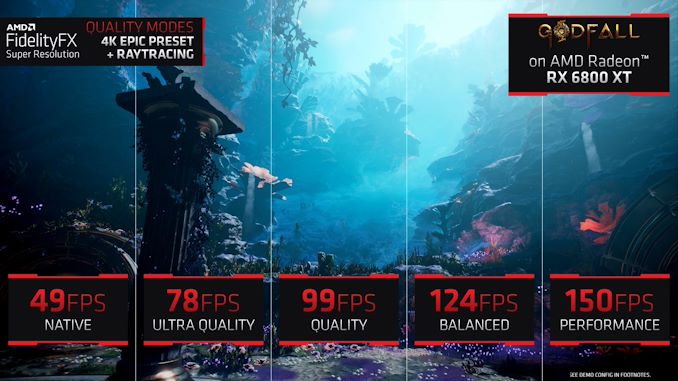
(ed: this slide does not appear to have FSR applied; it’s just a fancy background for the performance data)
However the million dollar question – and the question that AMD won’t really be answering until the 22nd – is what the resulting image quality of FSR will be like. Like other upscaling techniques, FSR will live or die by how clean of an image it produces. Upscaling techniques are going for “good enough” results here, so it doesn’t need to match native quality, however it needs to be enough to produce a reasonably sharp image without serious spatial or temporal artifacts.
And, to drop into op-ed mode, this is where AMD has me a bit worried. In our pre-briefing with AMD, the company did confirm that FSR is going to be a purely spatial upscaling technology; it will operate on a frame-by-frame basis, without taking into account motion data (motion vectors) from the game itself.
For GPU junkies, many of you will recognize this as a similar strategy to how NVIDIA designed DLSS 1.0, which was all about spatial upscaling by using pre-trained, game-specific neural network models. DLSS 1.0 was ultimately a failure – it couldn’t consistently produce acceptable results and temporal artifacting was all too common. It wasn’t until NVIDIA introduced DLSS 2.0, a significantly expanded version of the technology that integrated motion vector data (essentially creating Temporal AA on steroids), that they finally got DLSS as we know it in working order.
Given NVIDIA’s experience with spatial-only upscaling, I’m concerned that AMD is going to repeat NVIDIA’s early mistakes. Spatial is a lot easier to do on the backend – and requires a lot less work from developers – but the lack of motion vector data presents some challenges. In particular, motion vectors are the traditional solution to countering temporal artifacting in TAA/DLSS, which is what ensures that there are no frame-by-frame oddities or other rendering errors from moving objects. Which is not to say that spatial-only upscaling can’t work, only that, if it’s competitive in image quality with DLSS, that would be a big first for AMD.
Unfortunately, AMD isn’t doing themselves any favors in this regard with today’s presentation. Within their slide deck there is a single split image with FSR seemingly enabled, which they use for a GTX 1060 performance comparison. I’ve gone ahead and extracted the raw image from the slide deck given to the press and uploaded it here, to try to preserve as much image quality as possible. (Be sure to click on it to see the full-resolution shot)
Taking a jab at NVIDIA by comparing the GTX 1060 running at 1440p native versus FSR in quality mode, the demonstration slide shows that performance is significantly improved, bringing the GTX 1060 from 27 fps to 38 fps. Unfortunately the image quality hit is quite noticeable here. The building and bridge are blurrier here than the native resolution example, and the tree in the background – which is composed of many fine details – easily gives up the fact that it’s running at a lower resolution.
With that said, as I haven’t seen the technology in person in motion yet, I’m not in a position to claim how good all of this looks in action. But at least for static screenshots, it does raise an eyebrow. Though I will give AMD credit here for publishing a (seemingly honest) screenshot like this, rather than cherry picking something that oversells FSR.
In any case, there’s a lot more technical information on FSR that we’ve yet to see, and which AMD will be presenting on June 22nd. And, given the open source nature of FSR, AMD has little incentive or ability to hold back on technical information for too long. So the questions raised today with their brief teaser will make for good discussion fodder for FSR’s actual launch.
Finally, ahead of the FSR launch AMD is soliciting feedback on what games users would like to see supporting the technology. AMD is preseumably going to use this to help guide their developer relations priorities, so if you’re interested in supplying feedback, be sure to stop by AMD’s FSR survey site.
Overall, it goes without saying that a lot of people are eager to see what AMD can do with game upscaling technology, both to level the playing field with NVIDIA and to bring it to a wider array of hardware and games. It’s an ambitious project from AMD, and it will undoubtedly be interesting to see how everything falls into place when AMD launches the tech on June 22nd. So be sure to stay tuned for that!
Source: AnandTech – AMD Formally Unveils FidelityFX Super Resolution: Open Source Game Upscaling
The ASUS ROG Strix G15 (G513QY) Review: Embracing AMD's Advantage
The 1989 film Field of Dreams offers one of the most memorable quotes in movie history. “If you build it, he will come” was, of course, a reference to a baseball diamond in Iowa, but for AMD, this same quote (gender removed) also succeeds in defining AMD’s success over the last couple of generations. Once the realm of budget-conscious devices, AMD-based products are now the premium in the market and are sought after by consumers looking for the ultimate in performance. With the launch of the Zen 3 based Cezanne laptop processors, AMD now offers the most powerful laptop CPUs available. But that is only a single portion of a successful product. AMD is today announcing the launch of their latest graphics architecture, RDNA2, into the laptop market. AMD has built it. Now they must see who will come.
Source: AnandTech – The ASUS ROG Strix G15 (G513QY) Review: Embracing AMD’s Advantage
AMD Announces New Zen 3 Desktop APUs, FidelityFX Super Resolution + More
For being a virtual event, AMD’s keynote for Computex Taipei 2021 is filled with quite a bit of excitement and multiple product announcements. Here are the highlights for AMD’s new announcements at Computex 2021.
Source: Phoronix – AMD Announces New Zen 3 Desktop APUs, FidelityFX Super Resolution + More
The Asus ROG Strix G15 Packs a Punch With AMD's Impressive New Graphics Card
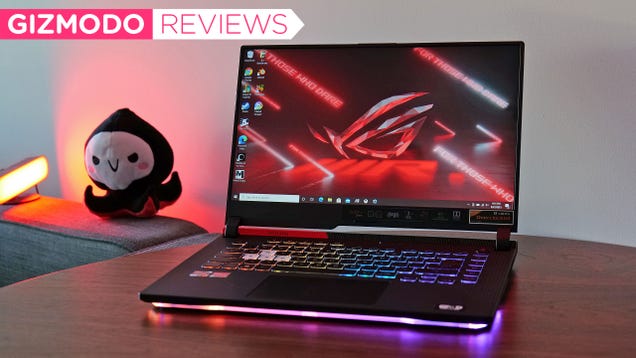
I’ve said before that PC makers who don’t offer AMD-based configs are pretty much trolling their customers, and with the release of AMD’s new RX 6000M line of mobile GPUs, that sentiment feels even more applicable. By combining a top-tier AMD mobile CPU with AMD’s latest flagship laptop graphics card, Asus’ ROG Strix…
Source: Gizmodo – The Asus ROG Strix G15 Packs a Punch With AMD’s Impressive New Graphics Card
AMD Radeon RX 6800M Rips Benchmarks In Powerful All-AMD ASUS Gaming Laptop
During her Computex 2021 keynote this evening, AMD CEO Dr. Lisa Su, along with compatriots Frank Azor and Scott Herkleman, revealed a number of the company’s new products an initiatives, targeting the server, desktop and mobile markets. For gamers, perhaps the most enticing announcement was the revelation of AMD’s Radeon RX 6000M series…
Source: Hot Hardware – AMD Radeon RX 6800M Rips Benchmarks In Powerful All-AMD ASUS Gaming Laptop
AMD Announces Radeon RX 6000M Series: RDNA2 Makes Its Laptop Debut
Headlining a busy Computex for AMD – and a bit of return to form in that regard – this evening the company is making several graphics and CPU-related product announcements. The most visible of which is on the GPU side of matters, where the company is launching their long-awaited Radeon RX 6000M series of laptop graphics adapters. Based on the same RDNA2 architecture that underpins AMD’s well-received desktop RX 6000 parts, the new mobile parts scale that down to power levels suitable for gaming laptops. All told, AMD is announcing three parts today – the Radeon RX 6800M, 6700M, and 6600M – with two of those parts shipping now.
Going back to CES 2021 at the start of the year, AMD has been touting laptop Radeon parts for the first half of 2021, and those parts are now landing right on schedule. All told today is a mix of new and old, with AMD releasing a new GPU as a mobile-first product (Navi 23), while also mobilizing the existing Navi 22 for use in laptops. Consequently, this means that there aren’t any major feature additions or hidden hardware capabilities to talk about for this launch. But that’s okay. AMD has plenty to offer just by bringing their RDNA2 GPUs to the laptop market.
When it launched on the desktop last year, the RDNA2 architecture was something of a turning point for AMD’s graphics division – a culmination of multiple generations’ worth of efforts to modernize their graphics architecture at both the execution and feature set levels. This has already paid off in spades for AMD on the desktop, but, as we’ll see over the coming weeks and months, it’s something that’s going to be an even bigger deal for AMD’s mobile graphics efforts.
To put things charitably for AMD, the company’s GPUs have been virtually absent from the laptop market for the last generation. Outside of their Apple commitment (with the interesting HBM-equipped Navi 12) and their experimental Dell collaboration (G5 15 SE) almost the entire laptop discrete graphics market was held by NVIDIA. And this was largely the case a generation before that, as well. AMD simply hasn’t had the hardware, software, and OEM relationships needed to drive a top-tier laptop graphics program, and that is finally changing, thanks in big part to RDNA2.
Power efficiency is incredibly important graphics performance, but that aspect is even more important for laptops. With desktop cards you can at least increase TDPs (to an extent) to buy more performance, but laptops are rigidly bound by the cooling capabilities of the form factor. So the only way to increase performance on a generational basis is to improve power efficiency, and that is an area where AMD has heavily invested into with RDNA2.
The net result is that AMD is in a much better position in this generation to fight for the laptop space. As we’ve already seen on the desktop, RDNA2 is performance and efficiency competitive, and that means AMD (finally) has the kind of architecture they need to make inroads into the laptop market. To be sure, even in the best-case scenario AMD isn’t going to immediately capture the majority of the laptop graphics market, but like their resurgence in laptop CPUs, laptop GPUs will be a multi-generational effort that has to start somewhere.
And the payoff for AMD isn’t just reputation, either. Laptop gaming continues to be a high growth area for the PC marketplace, and it can be very high margin as well, especially at the mid-to-high end. So for AMD’s graphics division, missing out on laptops hasn’t only cost them visibility and capital with game developers, but it’s left money on the table. This makes grabbing a sizable piece of the laptop all the more important for the company as part of their long-term product strategy.
But let’s not get too far ahead of ourselves. The first step for AMD is to launch a successful generation of laptop graphics adapters, which the company is aiming to do today with the Radeon RX 6000M series. Based on the Navi 22 and Navi 23 GPUs, AMD is taking their most power efficient graphics architecture yet and dropping it into laptops, looking to go toe-to-toe with arch-rival NVIDIA for the mid-range and high-end gaming laptop segments.
| AMD Radeon RX Mobile Series Specification Comparison | ||||||
| AMD Radeon RX 6800M | AMD Radeon RX 6700M | AMD Radeon RX 6600M | AMD Radeon RX 5600M | |||
| Stream Processors | 2560 (40 CUs) |
2304 (36 CUs) |
1792 (28 CUs) |
2304 (36 CUs) |
||
| ROPs | 64 | 64 | 64 | 64 | ||
| Game Clock | 2300MHz | <=2300MHz | <=2177MHz | 1375MHz | ||
| Boost Clock | N/A | N/A | N/A | 1560MHz | ||
| Throughput (FP32) | 11.8 TFLOPS | 10.6 TFLOPS | 7.8 TFLOPS | 5.5 TFLOPS | ||
| Memory Clock | Up to 16 Gbps GDDR6 | Up to 16 Gbps GDDR6 | Up to 16 Gbps GDDR6 | 12 Gbps GDDR6 | ||
| Memory Bus Width | 192-bit | 160-bit | 128-bit | 192-bit | ||
| VRAM | 12GB | 10GB | 8GB | 6GB | ||
| Infinity Cache | 96MB | 80MB | 32MB | N/A | ||
| TGP Range | 145W+ | 80 – 135W | 50 – 100W | 60W++ | ||
| Manufacturing Process | TSMC 7nm | TSMC 7nm | TSMC 7nm | TSMC 7nm | ||
| Transistor Count | 17.2B | 17.2B | 11.06B | 10.3B | ||
| Architecture | RDNA2 | RDNA2 | RDNA2 | RDNA (1) | ||
| GPU | Navi 22 | Navi 22 | Navi 23 | Navi 10 | ||
| Launch Date | 06/2021 | TBA | 06/2021 | 01/2020 | ||
Overall, AMD’s mobile graphics lineup is undergoing a bit of a realignment with this generation. Whereas the 5000M series was largely a mirror of the desktop parts running at lower clockspeeds and TDPs (e.g. a Navi 10-based 5600M), the 6000M series is closer to being independently aligned. Meaning that the Radeon RX 6800M, for example, is not based on the same GPU as the desktop 6800 (Navi 21), but rather the GPU used in the 6700 XT (Navi 22). All of which ends up being a similar tack to what NVIDIA has done as well for this generation of laptop parts. Though unlike NVIDIA, having explicitly-named laptop parts means that there should be much less confusion about whether a part is desktop or laptop (and its resulting performance class).
Radeon RX 6800M
Leading the charge for AMD’s new mobile lineup is the Radeon RX 6800M. As previously noted, this is based on the Navi 22 GPU, and in many respects can be thought of as a mobilized 6700 XT. The 6800M features the same 40 CUs and 64 ROPs as the desktop card; the only thing AMD has scaled down is the clockspeeds, to more mobile-friendly values. Even then, the 6800M still ships with a game clock rating that’s well over 2GHz, making it by far the highest clocked laptop GPU we’ve ever seen.
Like its desktop counterpart, the 6800M is being paired up with 12GB of GDDR6 memory. Though according to AMD, memory speeds for the 6800M (and all other 6000M) parts are “up to” speeds. In the case of our 6800M-equipped ASUS ROG laptop, it uses 16Gbps GDDR6, so it’s being kept fully fed with regards to memory bandwidth. However, this means that it’s possible other vendors may opt for slower/lower-power 14Gbps memory. As for AMD’s Infinity Cache, that isn’t being scaled back for this part at all; the full 96MB of SRAM ships enabled on the 6800M, and remains one of AMD’s key developments for improving power efficiency.
A fully-enabled Navi 22 setup does come at a cost, though, and that’s power. The 6800M has a 145W+ TGP rating, meaning that laptop implementations will start at 145W, and they can go higher from there. According to AMD we should see 6800M laptops configured for 145W to 165W or so, which would be comparable to high-end GTX 3080 laptop configurations.
With regards to performance, AMD is pitching the 6800M as the ideal solution for 1440p gaming. And, judging from what we’ve seen with its desktop counterpart, the 6700 XT, this should be a reasonably attainable goal even with laptop clockspeeds. Though don’t be surprised if you also see 1080p displays on 6800M laptops, as well, as some OEMs will be catering to esports gamers who are looking for minimal frame times/latency.
Radeon RX 6700M
Coming in below the 6800M is the Radeon RX 6700M. This is another Navi 22-based part, however it features a cut-down configuration and slightly lower TGP to match. Overall, the 6700M comes with 36 CUs enabled, marking the first time we’ve seen a cut-down version of this GPU. AMD has not dialed down the GPU clockspeeds, however, and at its full TGP the card is rated for the same 2.3GHz game clock as the 6800M. So relative to the 6800M, on paper the 6700M can offer 90% of the former’s compute/shader throughput.
Along with cutting back on the GPU itself, the 6700M also takes a step down in memory bandwidth and capacity. Here AMD is shipping the part with a 160-bit memory bus (essentially disabling a GDDR6 memory channel), which fully-populated gives the part 10GB of GDDR6 memory. Like the 6800M, it’s “up to” 16Gbps. In which case, at equal memory clocks, that gives the 6700M 83% of the 6800M’s memory bandwidth, a bit of a bigger cut than GPU throughput, but not by too much. The story is much the same for the Infinity Cache; 6700M gets 80MB of it, so it has a bit less onboard cache to play with as well.
Versus the 6800M, AMD hasn’t significantly cut back the 6700M, and this does get reflected in the TGPs. According to AMD a full-speed 6700M is 135W, only 10 Watts lower than the 6800M. However, unlike the 6800M, this is a top-end TGP, so OEMs can (and will) also design laptops with lower TGPs (and lower resulting performance). Overall, the 6700M is expected to go into laptops in the 80-135W range, so it will encompass a pretty wide range of designs. Accordingly, we won’t be too surprised if the 6700M ends up being a more common sight than the 6800M, since it can go in a lot more than supercooled high-end gaming laptops.
Finally, dialing back the performance of the 6700M also means that its target market segment is a bit lower as well. AMD is pitching this part as straddling the line for 1440p and 1080p gaming. Realistically, high TGP configurations should come fairly close to the 6800M (which is to say, fast enough for 1440p), while lower TGP configurations may end up a better fit for very fast 1080p gaming.
Radeon RX 6600M
Last, but not least among the Radeon RX 6000M product stack is the Radeon RX 6600M, which happens to be the only part being announced today that is based on a new GPU. The lightest memory of AMD’s laptop graphics adapter lineup, the 6600M is based on the Navi 23 GPU, the next step down in AMD’s GPU stack. With 11.06B transistors and a die size of 237mm2, Navi 23 is a further scaled-back Navi 2x design, similar to the step down from Navi 21 to Navi 22.
When fully enabled, Navi 23 is a 32 CU design with a 128-bit memory bus. This is still 80% the CU count of Navi 22 and 66% of its memory bus, accordingly, which is not a particularly large drop in resources. Instead, it looks like most of AMD’s transistor and die size savings for this smaller GPU are coming from the Infinity Cache, where there’s only 32MB of the SRAM available. Compared to the 96MB that shipped on Navi 22 (and the 80MB enabled on 6700M) this is a far larger step down. It removes over 3.2 billion transistors on its own (over half of AMD’s transistor savings), making Navi 23 significantly cheaper to manufacture, but it will be very interesting to see what the real-world performance repercussions are.
In any case, the 6600M will not be shipping with a fully-enabled Navi 23 configuration. Instead, AMD is shipping it with 28 CUs, and relative to the other 6000M parts, a slightly more conservative game clock of 2177MHz for a full-TGP configuration. On paper, this puts the 6600M at around 66% of the 6700M’s shader and compute throughput.
Navi 23’s 128-bit memory bus means that memory bandwidth has been dialed down proportionally as well. The laptop graphics adapter will ship with 8GB of GDDR6 running at up to 16Gbps, which is equivalent to shaving off 20% of 6700M’s bandwidth. The greater impact to be felt will be with the Infinity Cache, which as we mentioned previously is now just 32MB. The smaller cache increases the chances that memory operations will spill over into VRAM, so Navi 23 faces a bit of a double-whammy in that regard.
Otherwise, the smallest member of the 6600M stack is also the lowest-powered member. A top-end TGP configuration is 100W, and according to AMD, laptops OEMs can turn this down as far as 50 Watts. Which means that while this part can’t go into truly thin and light laptops (few of which have room for a dGPU as it is), at lower TGPs it shouldn’t require a bulky chassis, either. Following the traditional power/cost/volume curves, if AMD is successful in carving out a bigger piece of the laptop market for itself, the 6600M will almost certainly be the most common of the 6000M parts.
As for specific performance expectations, AMD is pitching the 6600M for 1080p gaming. Until we have a chance to see 6600M in action it’s difficult to say with certainty how well the part will fill this role, but 1080p seems reasonable for the hardware configuration. The real wildcard factor here is the Infinity Cache, and how well a 32MB cache ends up working. Aiming the part at 1080p gaming will certainly keep the image buffer sizes down, but not by as much as the overall cache size has been reduced.
Features, the Competition, & Availability
Alongside their raw compute capabilities, AMD’s new mobile products also support all of the new functionality AMD introduced with the 6000 series overall. This includes Smart Access Memory, AMD’s implementation of the PCIe resizable bar. This functionality is baked into the drivers and Navi 2x hardware itself, so it comes to AMD’s mobile team essentially ready-made. However whether it will be enabled on laptops still comes down to OEMs; other than AMD Advantage certified laptops, AMD can’t guarantee whether any given 6000M laptop will have SAM available.
SmartShift support is also returning for the mobile Radeon parts. The TDP shifting feature was first introduced into AMD’s hardware in 2020, when the company rolled it out in Dell’s G5 15 SE laptop, an all-AMD laptop that combined a Radeon RX 5600M with a Ryzen 4000 series APU. The Dell system was essentially a test-run for the feature – hence being the only system to ship with it in 2020 – and now that SmartShift has proven its value, it’s being made available to the rest of the OEM ecosystem. Being able to dynamically shift TDPs between the CPU and GPU should allow AMD OEMs to squeeze out a bit more performance from their laptops. And though it requires OEMs to buy both AMD CPUs and GPUs, judging from AMD’s recent success in the laptop CPU space, that task has become a whole lot easier since a couple of years ago.
Moving on, AMD’s expected competition for the Radeon RX 6000M parts is, unsurprisingly, NVIDIA’s GeForce RTX 30 series laptop adapters. AMD simply hasn’t been seriously competitive against NVIDIA in this space for a couple of generations now, so while it’s more a return to form for AMD, it’s been a long time coming.
Since everyone is playing in the same TDP-constrained space, AMD is aiming for no less than the top here. The company believes that the 6800M can compete with the RTX 3080, for example, and while we’ll have to wait for benchmarks to see how true that is, coming off of what we’ve seen with their desktop parts, AMD has some credibility here. At the same time, these are marketing slides, so they should always be taken with a grain of salt.
The company is also touting 6800M’s performance advantage over 3080 in situations where the laptops are running on batteries. This is a slightly more unusual claim (given the short battery life, how many laptop gamers do it on battery power?), and I imagine will feed back pretty heavily into whether a given system has SmartShift/Dynamic Boost support.
But even if the 6800M can’t beat the RTX 3080, AMD is still expecting it to deliver very high performance at 1440p. This is something that, judging from the desktop 6700 XT, is entirely possible.
As for the 6600M, AMD is claiming that the 1080p-targetted GPU should have no trouble delivering 60fps (or better) in major games. I suspect this won’t extend to ray tracing-enabled games (which tend to clobber everything), but otherwise this seems quite attainable for what seems like an increasingly low-end resolution in the gaming laptop market.
Wrapping things up, according to AMD both the Radeon RX 6800M and 6600M are shipping now. We already have the 6800M in-house via ASUS’s ROG Strix G15, which AMD has sampled to the press for this launch, and that laptop will be available at retail in June. The story is apparently similar for 6600M laptops, which those laptops reaching retailers now. That leaves the 6700M as the odd chip out; that’s going to be the last part AMD ships, and they haven’t said when this will be. And prices for all of these laptops is to be determined;
As for pricing, AMD isn’t working with OEMs to have a defined pricing structure in the same way that NVIDIA does, so at this juncture we don’t have planned MSRPs or such available. Like seemingly all computer hardware this year, retail prices (and availability) may end up at the whims of a crypto-crazed market.
Source: AnandTech – AMD Announces Radeon RX 6000M Series: RDNA2 Makes Its Laptop Debut
AMD makes a bigger play for gaming laptops with Radeon RX 6000M GPUs
AMD is finally bringing its RDNA 2 technology to notebooks. During its Computex keynote today, the company announced the Radeon RX 6000M series of mobile GPUs.
Source: Engadget – AMD makes a bigger play for gaming laptops with Radeon RX 6000M GPUs
AMD's New RX 6000M GPUs Are Here to Pick a Fight with Nvidia
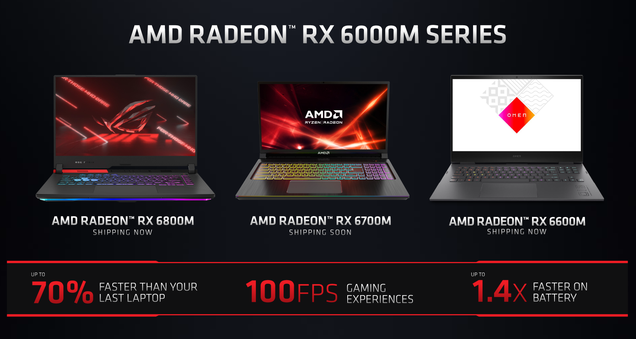
Previously, AMD didn’t really have mobile graphics cards that could properly take on Nvidia’s line of RTX 30-series laptop GPUs, but that changes today with the introduction of AMD’s new line of Radeon RX 6000M mobile GPUs.
Source: Gizmodo – AMD’s New RX 6000M GPUs Are Here to Pick a Fight with Nvidia
AMD Ryzen 5000G: Zen 3 APUs for Desktop Coming August 5th
Back in April of this year, AMD announced its new series of Ryzen 5000G processors with integrated graphics. These processors were an upgrade over the previous generation of 4000G hardware by using AMD’s newest Zen 3 cores coupled with Vega 8 integrated graphics. At the time those processors were released for the pre-built system market only, with promises that retail versions would be made available later in the year. Today AMD is announcing two Ryzen 5000G models for retail, coming to market worldwide on August 5th.
Source: AnandTech – AMD Ryzen 5000G: Zen 3 APUs for Desktop Coming August 5th
AMD Unveils Radeon RX 6000M Mobile RDNA 2 GPUs For High Performance Laptop Gaming
AMD has officially returned to the modern generation discrete mobile graphics arena, where its newly minted Radeon RX 6000M series will soon duke it out with NVIDIA’s GeForce RTX 30 series. Announced at Computex 2021, AMD’s latest mobile GPUs are powered by its second generation Radeon DNA (RDNA 2) graphics architecture, just like its Radeon
Source: Hot Hardware – AMD Unveils Radeon RX 6000M Mobile RDNA 2 GPUs For High Performance Laptop Gaming
AMD's Powerful Ryzen 7 5700G, Ryzen 5 5600G Zen 3 APUs Set For Retail Launch This Summer
Back in mid-April, AMD announced its Ryzen 5000G “Cezanne” APUs that are part of the company’s Zen 3 family. However, unlike Zen 3 “Vermeer” desktop processors — a la the Ryzen 9 5900X — Ryzen 5000G APUs have integrated Radeon Vega graphics.
During the initial announcement, AMD clarified that the first round of Ryzen 5000G processors would
Source: Hot Hardware – AMD’s Powerful Ryzen 7 5700G, Ryzen 5 5600G Zen 3 APUs Set For Retail Launch This Summer
You can buy AMD's Ryzen 5000 chips with Radeon graphics on August 5th
Today at Computex, AMD officially announced that consumers will be able to buy the 5600G and 5700G on August 5th for $259 and $359, respectively.
Source: Engadget – You can buy AMD’s Ryzen 5000 chips with Radeon graphics on August 5th
'Knockout City' is free for new players until they reach level 25
Starting this week, Knockout City is free to play until you reach level 25 in-game.
Source: Engadget – ‘Knockout City’ is free for new players until they reach level 25
Seagate 'Exploring' Possible New Line of Crypto-Specific Hard Drives
In a Q&A with TechRadar, storage hardware giant Seagate revealed it is keeping a close eye on the crypto space, with a view to potentially launching a new line of purpose-built drives. From the report: Asked whether companies might develop storage products specifically for cryptocurrency use cases, Jason M. Feist, who heads up Seagate’s emerging products arm, said it was a “possibility.” Feist said he could offer no concrete information at this stage, but did suggest the company is “exploring this opportunity and imagines others may be as well.”
Read more of this story at Slashdot.
Source: Slashdot – Seagate ‘Exploring’ Possible New Line of Crypto-Specific Hard Drives
Firefox Plans for Long-Awaited Native Translation Feature
No more installing additional extensions. You can get the Firefox Translation feature – right at the browser window natively. You can easily translate to English and other available languages. Here’s how.
Source: LXer – Firefox Plans for Long-Awaited Native Translation Feature

